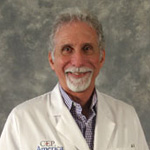Patient handoffs between the emergency physician and hospitalist involve some of the most crucial transactions in the Acute Care Continuum. When communication is clear and direct, it's likely to lead to better patient satisfaction, higher quality of care and a shorter length of stay.
On the other hand, holdups and miscommunications can have a negative impact on safety and quality. In one study published in the Annals of Emergency Medicine, 40 out of 264 physicians surveyed reported that they had dealt with an adverse event following an ED-inpatient transfer.
When researchers dug deeper into the matter, they found evidence of broken-down communication between emergency physicians and hospitalists. In one of the most telling studies, a multidisciplinary team used a technique called "discourse analysis" to break handoff discussions into a series of discrete utterances and analyze their form and content. (All discussions were recorded at the same hospital.)
The results were unnerving. Ninety percent of the utterances collected were of the "information giving" sort and came from the emergency physicians. "Information-verifying utterances," such as repeating back key details for clarification, accounted for less than one percent of handoff discourse.
This is concerning, because open communication plays such an important role in preventing medical error. The Joint Commission's National Patient Safety Goals require that each party to the handoff have an opportunity to ask and answer questions.
So how can we get emergency physicians and hospitalists working more closely together toward common aims? Clearly we need a fundamental shift in culture, expectations and trust. Emergency physicians shouldn't feel the need to "sell" the patient to the hospitalist during the handoff, and hospitalists should expect that the patient has had an appropriate workup and that inpatient admission is indicated.
For the past six months, I've been watching such a transformation in action. Vituity has staffed the emergency departments of Palomar Health System since 1972. In April, we also took on the hospital medicine services for Palomar Medical Center West, Palomar Health Downtown Campus and Pomerado Hospital. One of our major goals this year has been to improve collaboration and integration between the emergency physicians and hospitalists.
Today, we're six months into this journey. While we're still collecting data, our early experience has been that ED-hospitalist alignment has resulted in better, more efficient, more patient-centered care here at Palomar Health. So what have we done right? Lessons learned so far include:
Identify Leaders. First and foremost, I believe that the leadership and collaborative spirit displayed by ED medical director Jaime Rivas, our new hospitalist medical director Sabiha Pasha, and their respective leadership teams has gone a long way toward making this arrangement a success. They were highly visible from day one — reaching out to other departments, supporting hospital initiatives and forging strong working relationships with nurse leaders, medical staff and administrators.
Identify inpatient champions. To complement the existing ED leadership team, Dr. Pasha created a leadership team of four hospitalist physicians who serve as assistant medical directors of select patient care units and spearhead outreach and collaboration efforts with nursing and medical staff.
Build leadership capacity. Both hospitalist and ED physician leaders are participating in the hospital-sponsored Applied Physician Leadership Academy training program.
Focus on ED/hospitalist collaboration. Members of the ED and hospitalist leadership teams have begun meeting regularly to discuss communication, standardized workups, seamless care transition and improving patient experience across the Acute Care Continuum. We're planning our first combined physician meeting — which will bring together ED and hospitalist physicians from across the Palomar Health system — for January 2014. In addition, a social event including site physicians and their spouses/guests is planned for year-end.
Loop in the administration. Our regional director and the medical directors of the emergency medicine and hospitalist programs meet regularly with Palomar Health's CEO.
Partner with the parent organization. Physician leaders from the hospitalist and ED programs participate in important Palomar Health activities and initiatives, including patient flow, case management and utilization review meetings. The new hospitalist physicians have been quick to step beyond their specific roles and get involved in patient care initiatives across the system. Projects include the IHI/VHA Patient Experience Collaborative and outreach to various medical staff departments to improve communication and collaborate on inpatient care issues.
Seek and accept accountability. The hospitalist physicians participate in the hospital's Revenue Optimization Committee, which reviews extended observations stays, short inpatient stays and RAC denials. Hospitalist physicians are given provider-specific feedback.
Open the lines of communication — literally. To identify opportunities to improve patient care, safety and experience, the ED physicians and hospitalists have established a Care Concern Line. Identified issues are reviewed monthly with the hospital administration. Action steps are formulated and issues are followed through until resolution.
I believe that what's happening at Palomar Health is an excellent example of physicians stepping outside their traditional "silos" and reaching out to professional colleagues and hospital staff in a spirit of trust and collaboration. We've stretched ourselves, grown as professionals and focused on our common mission. The journey has just begun, but for the sake of our patients, it's a journey well worth taking.






















